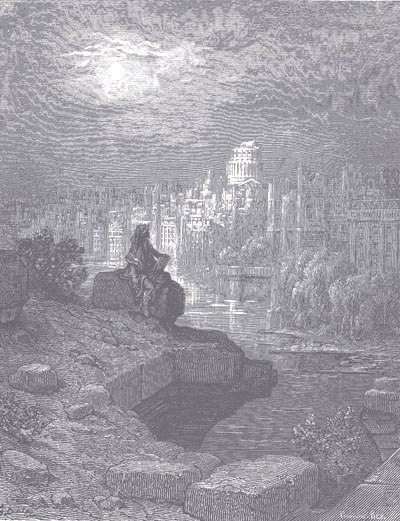Difference between revisions of "Future Archaeology"
m (→Future Archaeology Macaulay's New Zealander) |
|||
| Line 1: | Line 1: | ||
| − | == Future Archaeology Macaulay's New Zealander== | + | == Future Archaeology: Macaulay's New Zealander== |
[[Image:Dore.jpg|framed|right|Gustave Doré]]Science fiction often invokes archaeology. Even before science fiction an early invocation of a future New Zealand archaeologist was that of [http://en.wikipedia.org/wiki/Thomas_Babington_Macaulay,_1st_Baron_Macaulay Lord Macaulay] (1840)<ref>Thomas Babington Macaulay 1840 Essay, On Ranck's "History of the Popes". Edinburgh Review</ref>. | [[Image:Dore.jpg|framed|right|Gustave Doré]]Science fiction often invokes archaeology. Even before science fiction an early invocation of a future New Zealand archaeologist was that of [http://en.wikipedia.org/wiki/Thomas_Babington_Macaulay,_1st_Baron_Macaulay Lord Macaulay] (1840)<ref>Thomas Babington Macaulay 1840 Essay, On Ranck's "History of the Popes". Edinburgh Review</ref>. | ||
Revision as of 23:59, 8 July 2014
Future Archaeology: Macaulay's New Zealander
Science fiction often invokes archaeology. Even before science fiction an early invocation of a future New Zealand archaeologist was that of Lord Macaulay (1840)[1]."And she may still exist in undiminished vigour when some traveller from New Zealand shall, in the midst of a vast solitude, take his stand on a broken arch of London Bridge to sketch the ruins of St. Paul's."
Clearly the sketcher must be an archaeologist and in 1840 must have been conceived of as being a Maori New Zealander.
The quote is from an essay about the Catholic Church ("she" in this case) and Macaulay was using the idea to emphasise - despairingly - the persistence of that church. His point was to exaggerate that persistence rather than to explore the idea of a Maori archaeologist in the future - but still the idea is there. Macaulay wrote in poetic form on Ancient Rome (written in India) and in other form on his ideas of the future, so he was used to spanning time.
The idea was not entirely original (see Colenso 1882)[2] and the quotation has been the subject of other essayists [3]
The quotation is often shortened to one starting with "...some" - but that rather looses his point.
Distant relative Rose Macaulay amongst her many other works wrote on The Pleasure of Ruins (1953) but did not include her relative's vision of London in ruins.
Noted French illustrator Doré was inspired to depict the scene but no Maori characteristics can be discered.
References'
- ↑ Thomas Babington Macaulay 1840 Essay, On Ranck's "History of the Popes". Edinburgh Review
- ↑ A FEW REMARKS ON THE HACKNEYED QUOTATION OF "MACAULAY'S NEW ZEALANDER." By W. Colenso, F.L.S. [Read before the Hawke's Bay Philosophical Institute, 12th June, 1882.]- on line at http://nzetc.victoria.ac.nz/tm/scholarly/tei-Stout65-t2-body-d2.html accessed July 2014
- ↑ e.g.David Skilton - see http://traumwerk.stanford.edu/projects/71/47 and Aidan Baker http://www.lib.cam.ac.uk/CULIB/CULIB51/culib_51.htm
